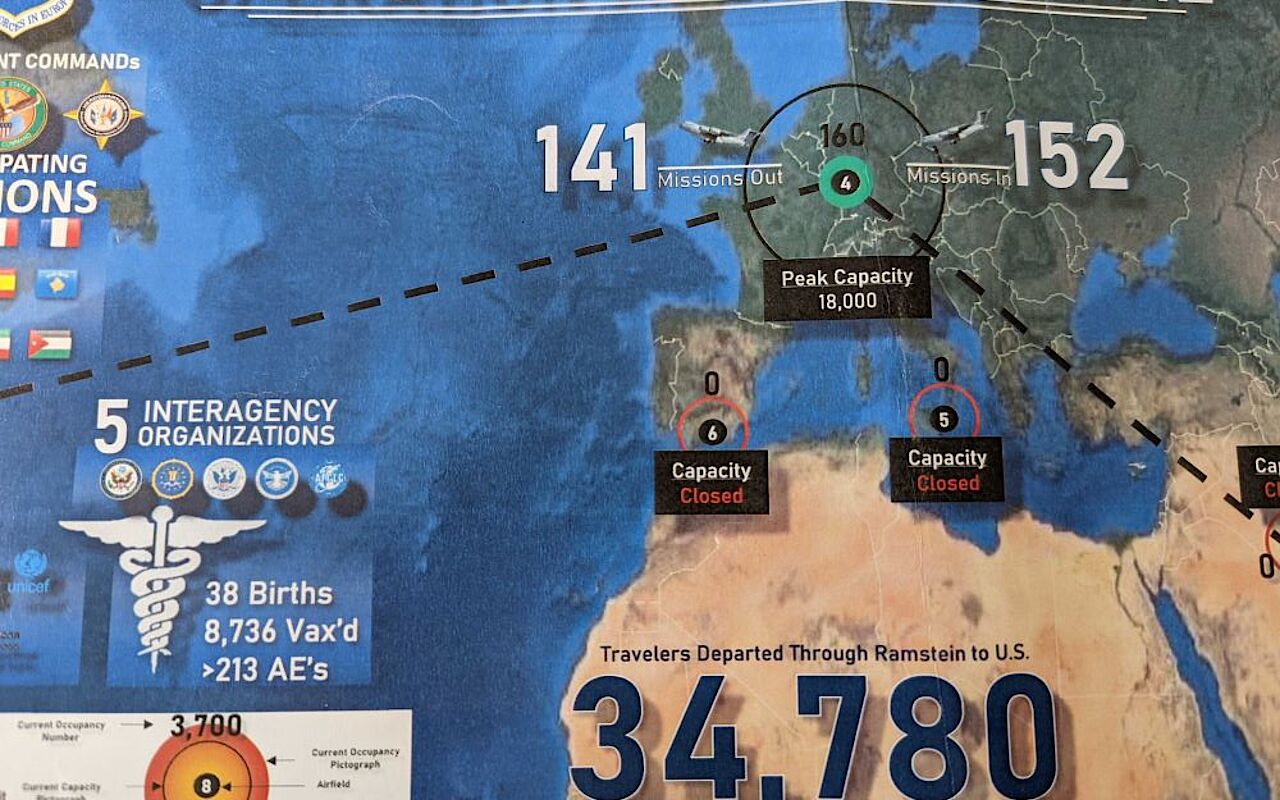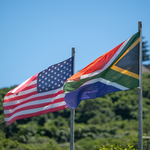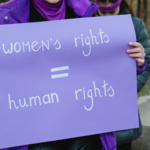by Allison Haskins, M.A.
The Kaiserslautern Military Community (KMC) has often been referred to as “Little America.” But does this hold true? In his study, The Kaiserslautern Borderland: Reverberations of the American Leasehold Empire, scholar Jörg Zorbach details how this nickname leads to a misunderstanding of the KMC. Instead of functioning as a “self-contained American military and civilian system,” Zorbach argues that the KMC is interwoven into the German community: “Legal issues, the use of space, environmental problems, regional employment issues, economic effects, and a variety of socio-cultural aspects exemplify that ‘Little America’ and its American population do get in contact with their German surroundings” (14).
This second blog post as a part of my Kasernen im Kopf project will briefly investigate exactly how these sorts of issues affect the KMC and its German neighbors. It will dive into two recent “external shocks” the Kaiserslautern borderland area has experienced and reflect on how the German-American community responded.
COVID-19 Pandemic (2020-present)
The COVID-19 pandemic knew no borders as it spread throughout countries at a breakneck speed. Governments and local authorities across the world attempted to pinpoint and reduce points of contacts between their citizens. Its effect on the KMC therefore highlighted where German-American contacts, and thus to what degree the military community is interwoven into the German community. Already in April of 2020, the Kaiserslautern American reported on measures the U.S. military was taking to work together with local German authorities to reduce and trace contact between people within the Kaiserslautern area, including: data sharing, synchronization and coordination of restrictions, as well as joint contact tracing efforts.
However, as the pandemic carried on into the summer of 2020, the united front and tight cooperation of the initial response waned. In October of 2020, Die Rheinpfalz investigated rumors that Americans in the military community weren’t fully following German COVID rules. Although the German and American authorities quoted in the investigation confirmed that all Rheinland-Pfalz COVID restrictions were being followed, a discontent with the Base continued. In March of 2021, Die Rheinpfalz published another write up responding to criticism of the reopening of Ramstein’s aquatic and fitness centers, when centers like these in Germany were still forbidden to open. In both situations, all rules were being followed in accordance with German restrictions, and NATO readiness requirements. However, the perception of Americans living in a separate “Little America” led some to assume that their COVID pandemic was also being experienced separately.
Finally, the COVID-19 pandemic called into question the overall standing of Americans in the community. Throughout 2020 and 2021, Landkreis Kaiserslautern fought to count the stationed Americans as part of their official populace. As Americans stationed in Germany do not go through the typical registration (Anmeldung) process when moving to Germany, they’re not statistically counted as part of local populations. This practice was called into question when Kaiserslautern Landkreis’ COVID 7-day-infection-rate was calculated with American infection numbers, but without general American population numbers, therefore artificially inflating the 7-day infection-rate and keeping the Landkreis in lockdown while other communities were able to slowly open back up. This controversy led to mayors petitioning German constitutional courts to include Americans in their populations. Much to the frustration of the Landkreis communities, the Bundeverfassungsgericht in Karlsruhe refused to hear the case, leading to a great disappointment in the community. The situation drew national attention, eventually leading to then Federal Health Minister Jens Spahn getting involved.
Afghanistan Evacuation (August-October 2021)
In comparison to the COVID-19 pandemic, the evacuation of Afghani contractors and other individuals by the U.S. military seemed, at face value, to have clear boundaries. August of 2021 saw an advance of the Taliban across Afghanistan, prompting American officials to rapidly, and with little preparation, evacuate American citizens, Afghani contractors, and other refugees. On August 20, the U.S. military began using Ramstein Air Base as a central logistics center for safely processing those evacuated before their final journey to the United States and other locations.
Known as Operation Allies Refuge, U.S. Forces evacuated about 123,000 people out of Afghanistan in the span of only about two weeks, with many of these people transiting through Ramstein Air Base. While this airlift, the largest in American military history, was contained to Ramstein Air Base, the German communities near base engaged to assist their neighbors. Churches called for donations, German emergency doctors and police forces collaborated with the base to form a medical-task-force, catering companies from Kaiserslautern worked around the clock to provide tens of thousands of meals, and local associations and individuals coordinated with the base to help in any way they could.
Conclusion
These two situations provide important case studies for analyzing the state of the German-American community today. The COVID-19 pandemic revealed areas where the American military community cooperates tightly with their German host nation. They created open channels of information sharing, and the American community experienced the COVID pandemic alongside their neighbors, lockdowns and all. However, the bureaucratic practice of not officially considering the military community as a part of the population and only calculating their infection rate hurt the Kaiserslautern area; affecting business and day to day life as lockdowns were extended.
Operation Allies Refuge presented a different opportunity to the community. While the mission was strictly military and confined to the bases, the German community rallied around their American neighbors, pitching in time and effort to support the base in their unprecedented airlift.
The 2017 interviews featured in the documentary Leben auf dem Pulverfass presented a picture that after 9/11, the Americans in the community slowly isolated themselves behind the gates of their installations and communities. The definition around “Little America” being a “self-contained American military and civilian system” supports this narrative, conceptualizing the military community in Kaiserslautern as separate. However, these “external shocks” reveal the interdependency of the communities, and highlight to what extent contacts between Germans and Americans in the Kaiserslautern military community exist.








